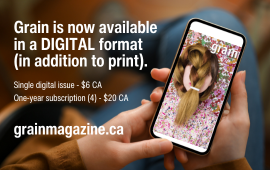The gangly-legged childhood version of me wanted to be a figure skater. My parents, regrettably, acquiesced and, after getting me properly outfitted in a pair of Don Jacksons and some sparkles, sent me tottering off to the Sackville Arena. I spent hours rehearsing camel spins, Salchows, and Ina Bauers, went through endless pairs of flesh-coloured tights, but, in the end, I was always flutzing my Lutzes and gradually came to accept that I would never be an Olympian (let's face it, I was already older than Tara Lipinski. Also, I had better things to do after school than endure below-zero temperatures in the few months of t-shirt weather we got (and, those sequined dresses aren't cheap, you guys). So I settled for playing my Michelle Kwan Figure Skating CD-Rom game on my parents' desktop and reading all the books in the Silver Blades series. (I'm not gonna lie. I still own Rumors at the Rink.)
In high school, my closest friends were more forward-thinking and had chosen a much more useful hobby--dance. They had shows in downtown lofts; they performed at pep rallies; they were called on for choreography when the drama club put on musicals; they weren't awkward at late-night school functions. I resented my parents for not squashing my dream to learn what seemed, to my hyperbolical high school self, an utterly untranslatable skill. (They could've at least warned me. Or given me some pointe shoes for Christmas.) Too embarrassed to join the young'uns in beginner classes, I decided to love dance from afar.
And so here I am today, considering myself to be (hopefully) a bit less gangly and hyperbolical, even more intrigued by the translatability of dance-- specifically, the relationship of dance to poetry. Lately I have been interested in poets who push closer to the fine line between music and poetry (Dennis Lee's Body Music, Robert Bringhurst's spoken scores for multiple voices, Jan Zwicky's Forge, to name a few). Most recently, I've become obsessed with Anne Carson's collaborations with Merce Cunningham dancers. In their first project together, The Possessive Used as Drink (Me): A lecture on pronouns in the form of 15 sonnets, each poem is danced as well as read aloud. Watching this was a completely different experience than any dance I had seen before although I couldn't exactly describe why. Robert Bringhurst has said that polyphonic poems contain “two or more interrelated but independent statements” and the combination “exceeds the sum of its parts” (“Singing with the Frogs”). In The Possessive Used as Drink (Me), though not exactly an example of polyphony, there are two independent, interrelated statements although they are not both vocal--one does not seem to dominate the other; one does not seem to be set to the other. The dancers' expressions are statements that, combined with the words being read aloud, “exceed the sum of their parts,” and the effect of the multiple narratives happening simultaneously appeals to multiple senses with new possibilities for imagery.
“Drop't Sonnet” is read without much expression or variance in volume. The dancers' faces are cut off as well, so we turn to the words themselves and the movement to find expression. At the end, the faceless dancer in the foreground uses a foot to eclipse the face of the dancer in the background. Simultaneously, Carson speaks of that loss of differentiation: “when a language drops a distinction… as for example English has modified the second person singular” and “I confess not til I met you did I begin to feel this change as a loss.” It was at this final movement that I realized poetry is not standing in for music here. Contemporary dance is usually thought of in combination with music, but dance combined with the spoken invites you to hear the dance in a different way. It is not like a dance to music. I have been trying to discover what this difference is, what it is that seems to change the to to with, and while it might not fit the definition of musical or literary polyphony, these poems seem to have a similar effect: the combination of poetry and dance creates a kind of music, a resonance, here.
More recently, Carson has continued to collaborate with Merce Cunningham dancers on numerous other projects. Nox, the multi-voiced epitaph for her brother that scrapbooks elegy, translation, lexicography, letters, and anecdotes is rife with multiplicity even before the dance is added.
In this video, the moment when Carson's intensely personal words, spoken without emotion, juxtapose with the emotive body language of the two dancers, the gravity of the loss is communicated so clearly. Dennis Lee says poetry is “like hearing a constantly changing tremor with your body: a play of movement and stress, torsion and flex- as with the kinaesthetic perception of the muscles… More and more I sense this energy as presence both outside and inside myself, teeming towards words” (Body Music 3-4). In these collaborations, kinaesthetic perception of poetry is experienced in a whole new way. The final moment when the dancer balances, shaking, muscles taut, on the windowsill as the blinds come down in front of him, trapping him between inside and outside, is a beautiful image to not only illustrate the restrained grief of the piece, but also to feel it, bodily, even as Carson's voice continues in the darkness.
Dennis Lee also speaks of poetry in dance terminology: “the way the poem moves in time--its pace and gait and proportions. A poem can unfold with the shapely aplomb of a gavotte, or meander, or wove with a quicksilver stutter and glide” (Body Music 197). This is no accident. The two are often connected figuratively. In these videos, where the connection becomes literal, the dancers are not so much dancing to the poems (with words substituting for music), but as a part of them-- contributing their own voice, speaking simultaneously, even polyphonically, and creating new resonance.
Chantelle Rideout
Editorial Assistant











Comments
Thank you
Add new comment